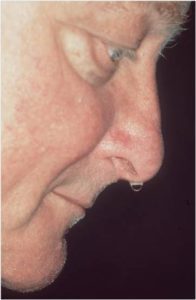
What is CSF Rhinorrhoea? How to manage it? What are the precautions to be taken? What are the signs and symptoms? What is the cause of this disease? How to treat it? How can homeopathy help you? All of this answered, in this post and of course our doctors always there to help you. Just fill in your details in the form down below and we will answer all your questions for FREE!

What is Cerebrospinal Fluid Rhinorrhoea/ CSF Rhinorrhoea?
Cerebrospinal fluid rhinorrhoea is a sign of basal skull fracture.
If there is an immediate leak, it means there occur dural tear, bone defect or fracture. If there is a delayed traumatic leak then the major cause is the previously intact dural layer that has slowly become herniated through a bony defect finally tearing the dura and causing the leak.
Spontaneous CSF rhinorrhoea is manifested in adulthood, and coinciding with a developmental rise in CSF pressure with increasing age.
What is the age /sex prevalence of CSF Rhinorrhoea?
CSF rhinorrhoea can occur at any age.
There is no evidence of any particular. Individuals of any race can be affected by CSF rhinorrhoea.
How do you get affected with CSF Rhinorrhoea?
Injury to skull due to an accident is the major cause.
Traumatic causes are as follows:-
• Non surgical causes
Blunt trauma such as non surgical fracture.
Projectile trauma.
• Surgical causes
Paranasal sinus surgery.
Skull base tumor ablation.
Transsphenoidal surgery.
Craniotomy.
Spontaneous or non-traumatic causes:-
• High blood pressure flow-
Intracranial tumors.
Hydrocephalus.
• Low blood pressure flow-
Sellar atrophy.
Bony erosion, Osteomyelitis, Osteonecrosis.
Olfactory atrophy/ focal cerebral atrophy.
Congenital defects of the skull base.
Pneumatized bone.
Idiopathic.
What are the signs and symptoms of CSF Rhinorrhoea?
The most common symptom of CSF rhinorrhoea is unilateral clear watery nasal discharge with a salty taste.
• Dripping of watery fluid in the back of the throat.
• Lead occurs due to the following conditions
High pressure- builds up over time and relieved by the sudden discharge of fluid. Low pressure- a postural headache relieved by reclining.
• A large amount of fluid flowing out of the nose during a change in a head position indicates that a sinus filled with CSF is drained at once.
• There are recurrent attacks of a headache, fever, and meningitis in a patient who have a history of head trauma.
• Imbalance, dizziness, hearing loss.
What investigations are required in case of CSF Rhinorrhoea?
The investigation starts with physical examination and physical examination include the following steps:-
– Complete rhinology, otologic, head, and neck, and neurological evaluations.
– Endoscopy is helpful to detect encephalocele or meningocele.
– Target sign/ halo sign: pseudo chromatographic pattern produced by a differential diagnosis of CSF admixed with blood or serosanguinous fluid on filter paper- CSF produces a bull’s eye pattern with blood in the center.
– Glucose levels
CSF->=50-60% serum concentration.
Nasal secretion- <=10mg%. Chloride concentration >110m/Eq/L- most likely CSF.
Qualitative spot test- Dextrostix.
-not definitive
-negative test excludes the presence of CSF.
Imaging techniques helpful are as follows:-
• Plain X-ray skull
Basilar skull fracture.
An air-fluid level in the PNS
• CT scan skull with bone windows.
• CT cisternography.
• MRI skull.
What are the complications of CSF Rhinorrhoea?
• Meningitis.
• Pneumocephalus.
• Cerebral abscess.
• Encephalitis.
• A headache.
• Intracranial hemorrhages.
• Dural cutaneous fistula
Is CSF Rhinorrhoea Life-threatening condition?
If detected at the early stage can be treated with medications.
Complications can lead to death if infection occurs can cause coma also.
Explain the Management of CSF Rhinorrhoea patients?
-Conservative treatment
-Following points to be taken care of by the patient
• The position of the head elevated 30-40° to prevent a cranial leak.
• Avoid sneezing, coughing, straining.
• Careful monitoring is necessary to prevent the happening of meningitis or pneumocephalus.
• Antibiotics.
• Lastly, can be treated with surgery to stop the drainage.
For more information, you can visit NCBI and eMedicine.
We have a strong web presence all across the globe with patients in major countries like United States, Australia, United Arab Emirates, Canada, United Kingdom, most European countries, & even smaller counties like Uganda, Nepal, Bangladesh and many more.
We have a very efficient team of doctors which includes the right combination of highly experienced doctors and the doctors of the new age.
Our main aim is to make the patient comfortable so that the case can be taken with ease and the patient be treated properly.
** The text on this website is sourced from websites like emedicine and/or other verified material by government agencies around the globe along with valuable inputs and additions by our team. The content of this page is proofread and updated by the team of doctors, every once in a while, to provide the most accurate information.